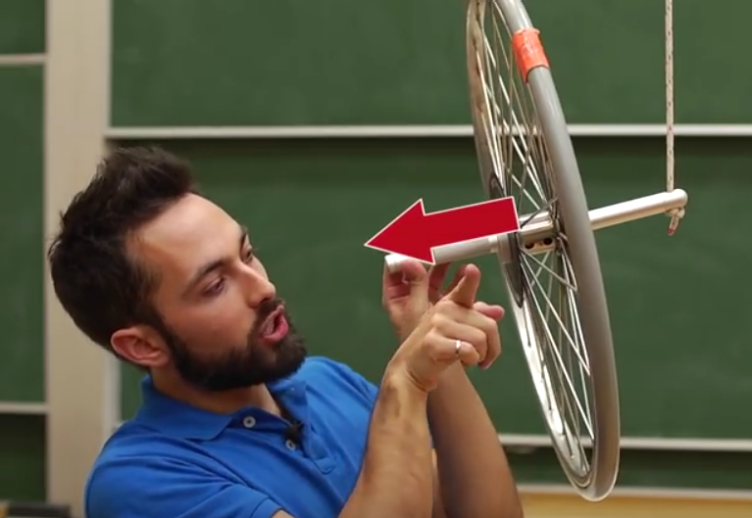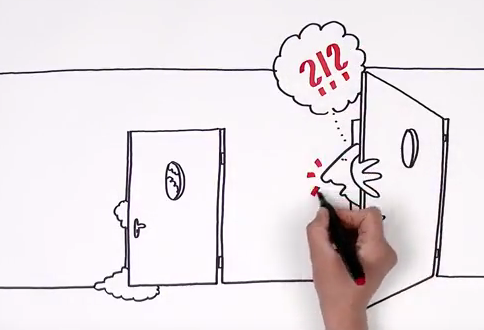Video in teaching
Video is increasingly one of the most popular media formats on the internet, and is becoming more and more important at universities. Below are the main reasons why videos are so effective and engaging in teaching.
- Moving pictures and audio deliver a quicker overview of a theme than do text and images alone. This provides a sense of security.
- Viewers’ emotions are engaged by the speaker’s gestures and voice. They are brought closer to the action – an important factor in learning – by this personalised exchange.
- Content can be broken down into small chunks. These “learning nuggets” are popular.
- Familiar situations verify authentic relevance and foster learning.
- Viewers can determine the learning tempo, e.g. by taking breaks or rewinding.
The following eight scenarios benefit particularly from the specific advantages of video in training and continuing education (before, during and after a course).

7. Counteracting of misconceptions
Misconceptions can be effectively laid to rest in video demonstrations. Videos show unequivocally that certain assumptions cannot possibly be right. Video clips of experiments demonstrate the incompatibility of existing misconceptions and concepts which are actually correct.
At ETH various forms of video production (see below) are available for creating the various types of video shown above.
Teaching videos should fulfil the following criteria:
Structure
- Content is well-structured (introduction, examples, conclusion)
- Videos are expediently embedded in the course (clear relation to learning objectives)
- Short videos of 2-4 minutes, and no longer than 6 minutes, are preferable (recommendation)
- Uses playlists as orientation aids (length, short description)
- Adaption to student needs
- Linked to the previous knowledge of the target group (cite references)
- Intelligible to the target group (language and content)
- Deploys authentic examples appropriate to the target group
- Lecturers act genuine in the video and show real interest in the material. Any verbal errors are trivial.
Activating students
- Include activation tasks (e.g. interposed questions or final quizzes)
- Foster contact with students (e.g. with invitations to reflect)
- Content is linked with concepts, examples, analogies, consolidation material etc.
- Good media didactics
- The strengths of the video medium are consciously deployed (see 8 ideal scenarios). Content is covered and learning objectives are reached better via video than via other media (text, images, live presentations).
- The design methods selected expedite content and learning objectives.
- Use of visual and audio channels is optimal (complementary). The working memory is not overburdened (appropriate density of information, built-in breaks).
- ID Multimedia Production and Distribution is responsible for alltechnical aspects (images, audio, light).
- LET (Educational Development and Technology) provides assistance with the design of video content and the didactic concept.
Download Criteria checklist in PDF form (PDF, 20 KB)
In front of the camera: Checklist
Clearly structured content, carefully planned message and the right language are essential for every video recording. It is estimated, however, that around 75% of how a video is received depends on outside influences. This Download checklist on camera (PDF, 25 KB) will help you to avoid mistakes in this area and improve your recording.
For further information on didactic design of teaching videos, with ETH examples, see “Videos in Teaching” on the Refresh-Teaching website.
At ETH there are three ways to produce teaching videos, ranging from a high-end studio to do-it-yourself variations using borrowed equipment. Depending on the situation, teaching videos are then published in a Moodle course, a MOOC or otherwise.
- Video studioin the ETH Main Building and professional video production outside the video studio
- Do-it-yourself according to a manual in the ETH Main Building
- Do-it-yourself according to Download criteria (PDF, 20 KB) for teaching videos – the quality of audio and light must in particular be guaranteed.
- For the upload and distribution of instructional videos within moodle courses, please use currently polybox
Create Video-Link: How-to video
Embed Video-Link in Moodle Course: How-to video







